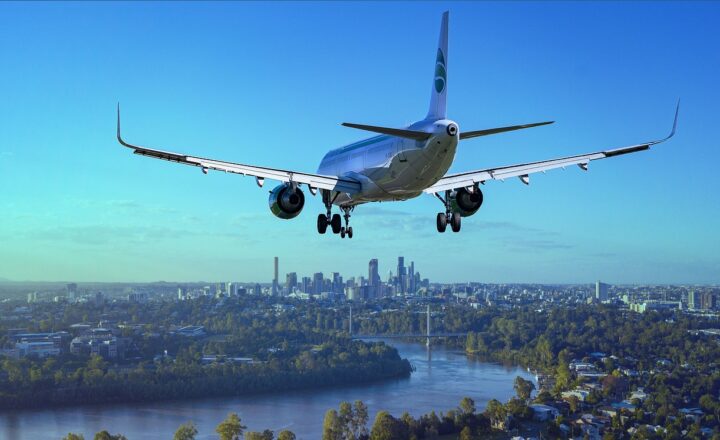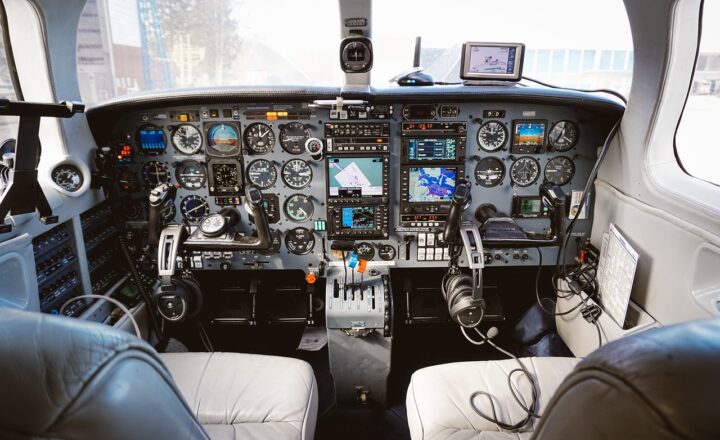The Story of the World’s First Airplane and How It Paved the Way for Modern Aviation
November 12, 2024

The dream of flying has captivated humans for centuries. From ancient myths of Icarus to Leonardo da Vinci’s sketches of flying machines, the desire to take to the skies has been a powerful force. However, it wasn’t until the early 20th century that this dream transformed into reality, culminating in the invention of the world’s first powered airplane. In this article, we’ll take you through the fascinating story of the Wright brothers, their groundbreaking invention, and the profound impact it had on aviation as we know it today.
1. The Wright Brothers: Pioneers of Flight
Wilbur and Orville Wright, two brothers from Dayton, Ohio, were central figures in the development of the airplane. Their passion for flight began with model kites and gliders, inspired by the work of previous aviation pioneers such as Otto Lilienthal, who demonstrated controlled flight with a glider. However, unlike their predecessors, the Wright brothers were determined not only to achieve flight but to create a controlled, sustained flying machine.
In 1900, the Wright brothers built their first glider, which they tested at Kitty Hawk, North Carolina—selected for its favorable winds and sandy terrain. They conducted extensive experiments with various wing designs and control systems. In 1902, they developed a more advanced glider that was able to stay airborne longer and allowed for better control. This series of gliders laid the essential groundwork for their subsequent invention, the powered airplane.
2. The Birth of the Powered Airplane
After successfully mastering glider technology, the Wright brothers turned their attention to creating a powered aircraft. They realized that overcoming gravity was only part of the challenge; necessary innovations also included an engine that was lightweight and powerful enough for sustained flight.
In 1903, after constructing an engine using their own designs, they were ready to test their powered aircraft. On December 17, 1903, at Kitty Hawk, the Wright brothers made history. Their aircraft, known as the Wright Flyer, achieved the first successful powered flight. Orville piloted the first flight, which lasted 12 seconds and covered 120 feet. After four flights that day, they successfully demonstrated that controlled, powered flight was possible.
These flights marked a significant milestone. The Wright Flyer wasn’t just a simple machine; it represented the dawn of a new era in human mobility and transportation.
3. Innovations That Set the Stage for Modern Aviation
The Wright brothers’ success was not merely a result of chance; it involved meticulous research, experimentation, and innovative engineering. Some key innovations they introduced included:
- Wing Warping: This system allowed the pilot to control the aircraft’s lateral balance, providing essential maneuverability by changing the shape of the wings during flight.
- Three-axis Control System: The Wright brothers implemented a system to control yaw, pitch, and roll, giving the pilot complete control over the flight path. This foundational control system remains in use in modern aircraft design today.
- Lightweight Engine Design: The engine developed for the Wright Flyer was one of the first of its kind that delivered sufficient power while remaining lightweight, demonstrating the balance between power and efficiency needed for flight.
These innovations were critical not only for the successful operation of the Wright Flyer but also for future aircraft development.
4. The Impact of the Wright Brothers on Aviation
After their groundbreaking flights, the Wright brothers continued to improve their designs, constructing more advanced models that could carry passengers. In 1905, the Wright Flyer III became the first practical airplane, capable of sustained flight. As interest in aviation grew, Wilbur and Orville Wright began to showcase their inventions, and the world slowly recognized the potential of flight.
Aviation technology progressed rapidly following the Wright brothers’ achievements. Their influence extended to the military, commercial aviation, and beyond. By World War I, airplanes were being used for reconnaissance and combat. The commercial aviation industry took off in the 1920s, providing public air travel and distance commercial transport that would change the dynamics of trade and travel.
These advancements illustrated the tremendous potential of aviation, cementing its role as an integral part of modern society. Today, flying is a commonplace means of transportation, and the global aviation industry continues to evolve.
5. Conclusion: The Legacy of Flight
The story of the Wright brothers and their pioneering aircraft is more than just a historical account; it symbolizes human ingenuity, perseverance, and the unyielding quest for progress. Each technological advancement has laid the foundation for the airline industry as we know it today, from commercial airliners to aircraft designed for space travel.
As we look back at the fundamentals of aviation, it’s vital to recognize the spirit and vision of two brothers who dared to dream of flight and succeeded against the odds. The impact of their journey is immeasurable, ushering in an era where the skies are open to everyone.
In honor of the Wright Brothers, let us continue to embrace innovation and aim for new heights in aviation and beyond!








